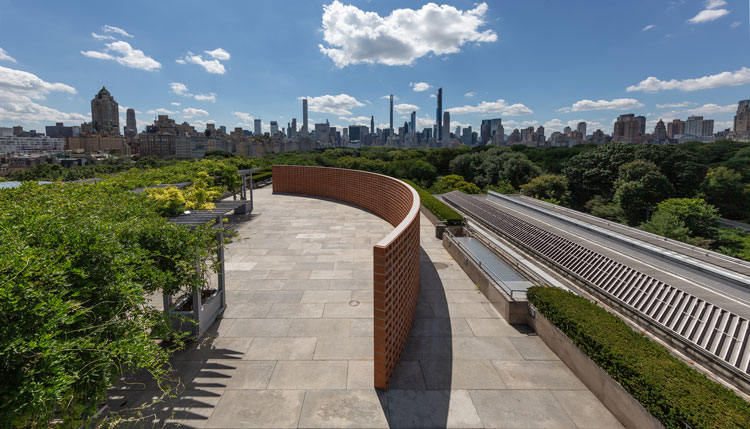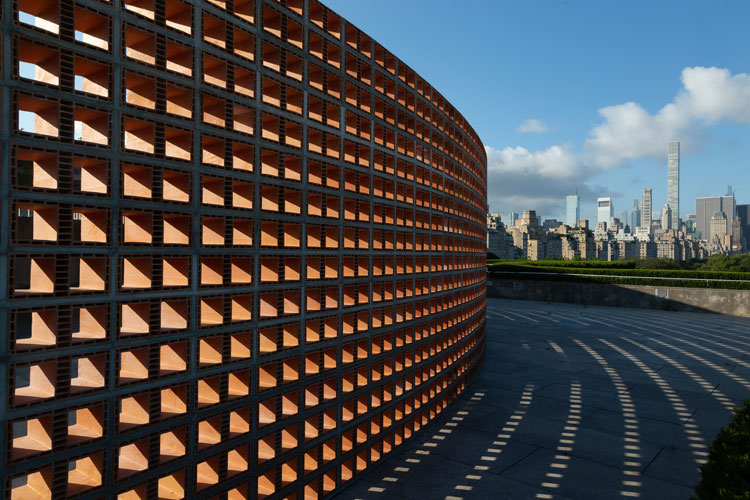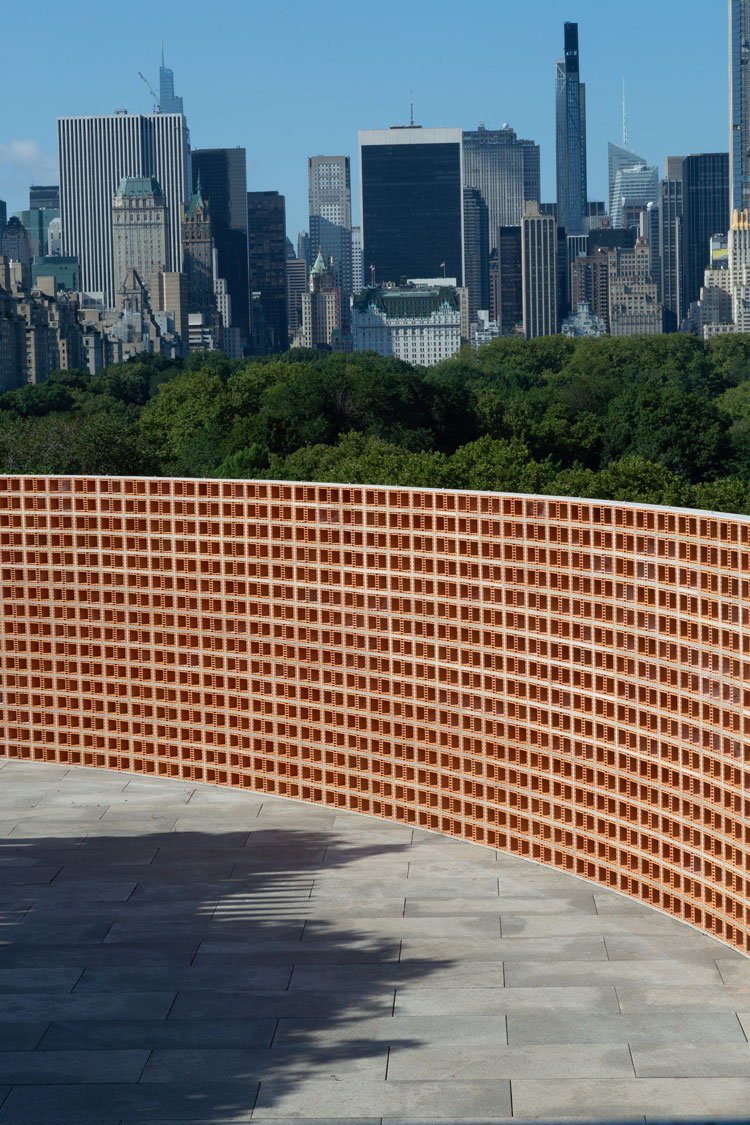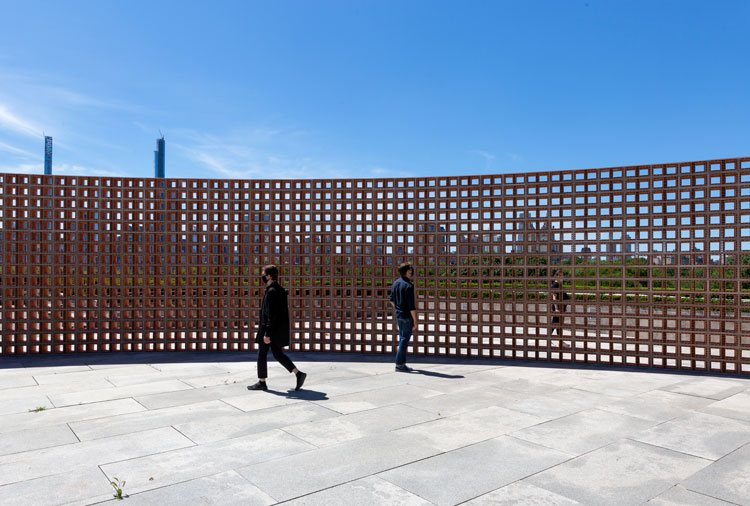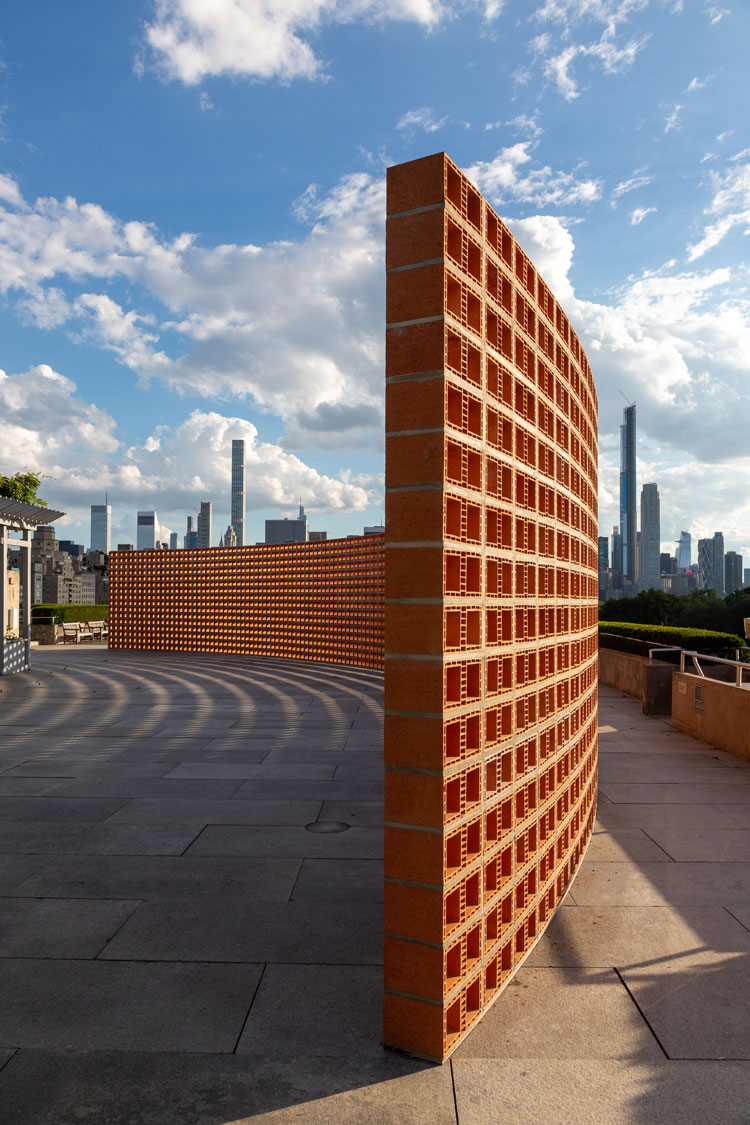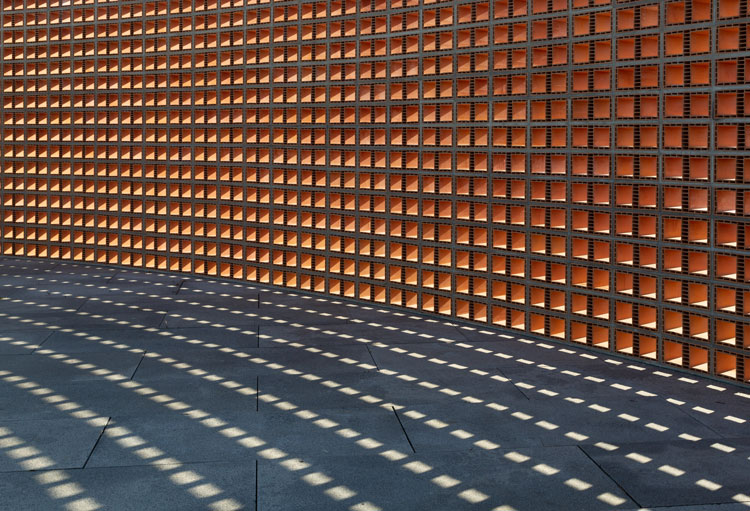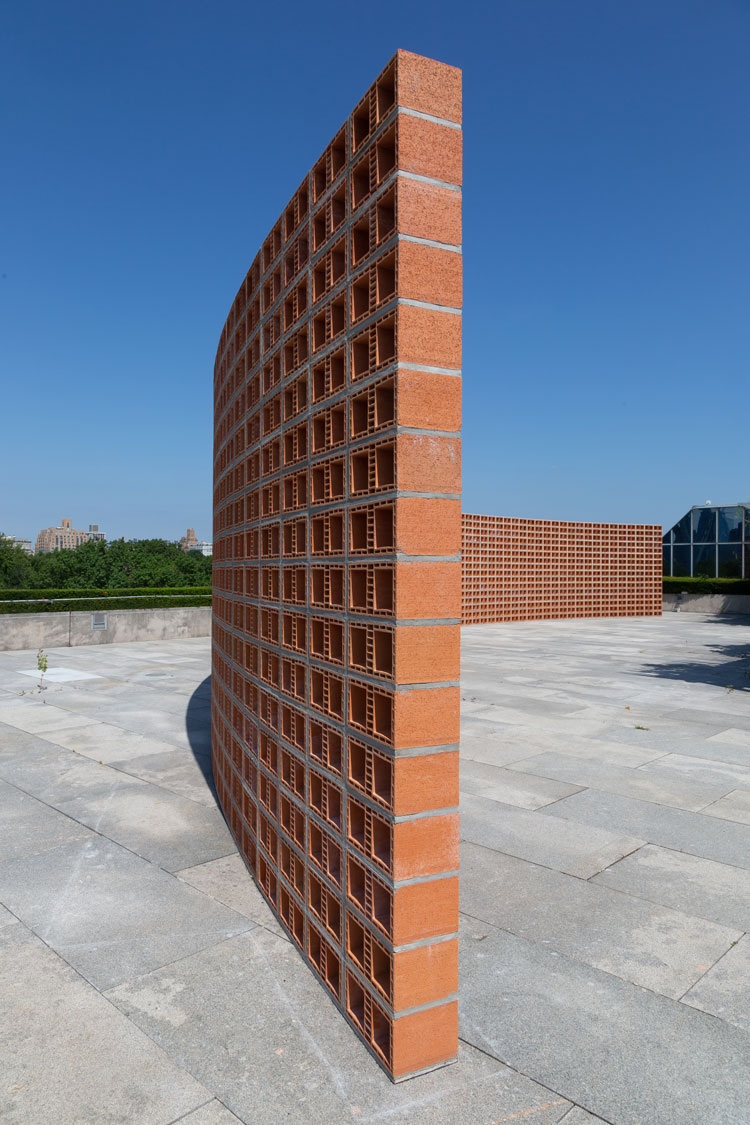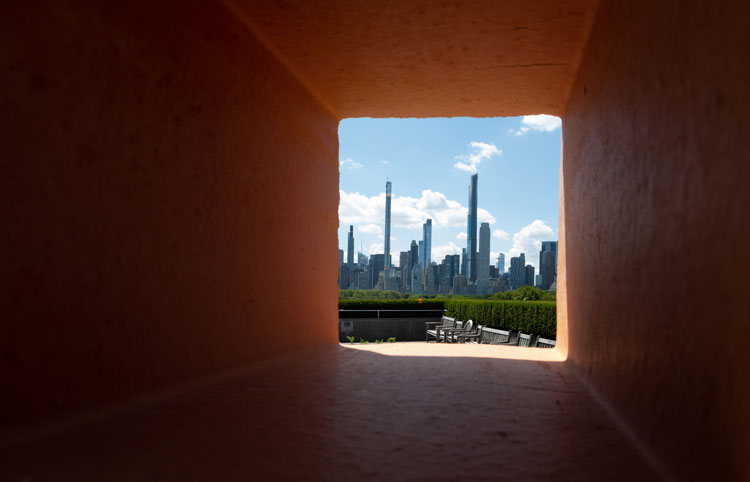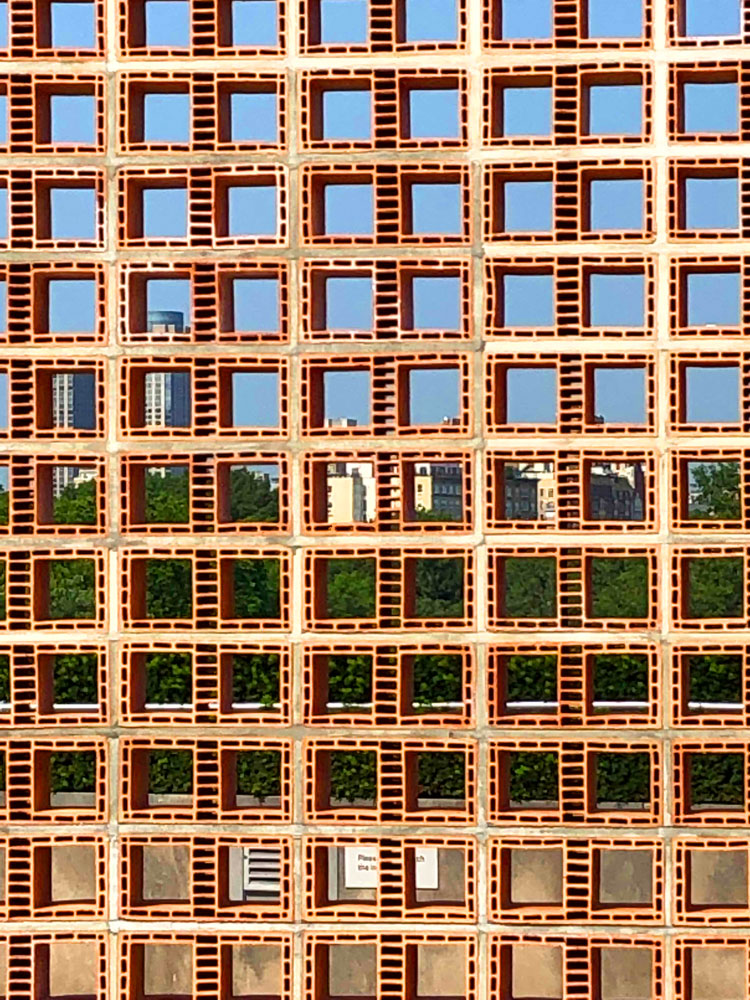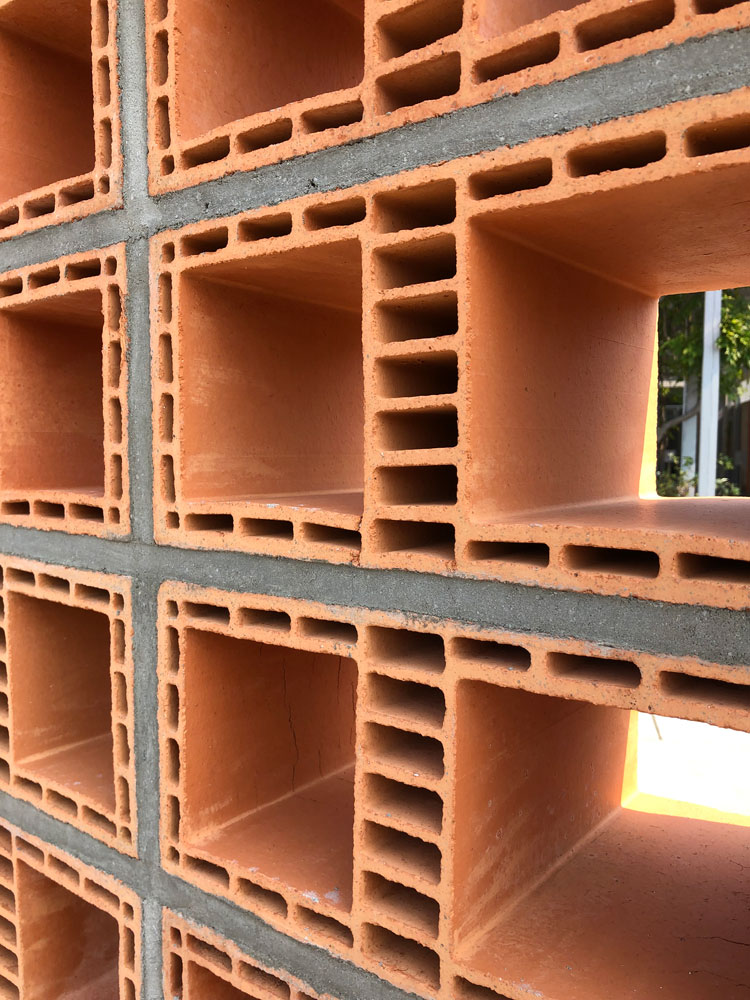

Cantor Roof Garden, Metropolitan Museum of Art, New York
29 August – 7 December 2020
by LILLY WEI
Walls have become an increasingly inflammatory topic. Those along the US-Mexico border in particular have triggered massive protests and a humanitarian crisis, the fates of the migrants and refugees from Latin America denied access to the United States all the more precarious because of the Covid-19 pandemic. With that in mind and more, Héctor Zamora’s striking installation, Lattice Detour (2020), organised by Iria Candela, a curator of Latin American art, could not be more relevant as the artist examines the nature of walls, as well as their social and political implications and uses. Just completed, after construction was interrupted in March, it is the eighth annual commission for the Metropolitan Museum of Art’s Cantor Roof Garden, a space first made available to the public in 1987.
[image3]
Zamora was born in 1974 in Mexico City, where he currently lives and works, returning from Lisbon and São Paulo after an absence of nearly 15 years. He shows widely and is known for the activation of architectural structures and sites that includes the participation and reaction of local communities. While too nuanced to be unvarnished agitprop – his perspectives are multiple and include the art historical and aesthetic – his projects raise difficult, provocative questions about socioeconomic and environmental issues.
[image7]
Zamora’s freestanding wall is elegantly minimalist, with the style’s characteristic clarity of form, its sweep extending 100 feet (30.5 metres). However, it is not only about barricades. Its height, at 11 feet, not quite twice the size of a human figure, is surmountable and its curve is gentle. Nonetheless, its presence is undeniably intrusive, subjecting us to a kind of controlled passage as it cuts unevenly through the space, pressed more closely to the perimeter of the terrace on its outside face so that circulation is even more constricted.
[image4]
That said, on closer inspection, Lattice Detour is shown to be a lighter, less adamant construct than it appears to be initially. The imported – or immigrated – terracotta bricks, specifically fired from native Mexican clay, are stacked so that their hollow interior is visible. More screen than wall, it exalts the humble building materials of vernacular architecture, the baked earthen brick integral to Latin American, Mediterranean and Islamic construction. Zamora’s wall is well-perforated, the surface more space than solid, permitting light and air to pass through it. The open grid offers a kind of climbing wall with footholds and handholds (but please don’t be tempted!) acting as a template in the creation of patterns of light and dark that play across its surface and paint the ground it stands on, responding to changes in weather and time of day. The grey mortar that holds it together contributes a further design element. This wall also lets us see what is happening on its other side. We are not isolated behind it. As we gaze outward, it frames the lush greenness of Central Park against the skyline of Manhattan in the distance, its reddish tones, at the moment, highlighted against the blue summer sky.
[image5]
The word “detour” also tells us that it is not solely about barriers, dead ends. It signals a roundabout route as a way to overcome obstructions. This wall is not only porous, capable of visual penetration, but also shows us that it can be scaled, and skirted. Think of other walls: the Great Wall of China, breached by Genghis Khan and the armies of what would become the Qing dynasty, or the Maginot Line in France, which deterred a direct attack by the Germans, but was then simply outflanked as the German army invaded via Belgium, or the fall of the Berlin Wall, jubilantly demolished following a change in government policy.
[image9]
Lattice Detour also brings up the vexed role of public art today, as monuments of all kinds are being questioned by a public that is no longer acquiescent or indifferent. It calls to mind Richard Serra’s controversial Tilted Arc from 1981, commissioned for Foley Plaza in downtown Manhattan. Zamora echoes its form here, although Tilted Arc was far more aggressive in presence. Made of unyielding rust-red Corten steel, it was situated centre stage in the plaza, impeding pedestrian traffic and blocking views. The backlash was almost immediate. The many federal employees in the building adjacent to the plaza, as well as others who used the space, protested vehemently, supporters on both sides fiercely partisan. Eventually, the employees prevailed, and Tilted Arc was taken down. Forty years later, the debate that it incited continues, although at the moment the questions are more focused on such art’s political impact: what is public art, who is it for, who gets to choose it – and who gets to remove it? The same could be said for walls.
